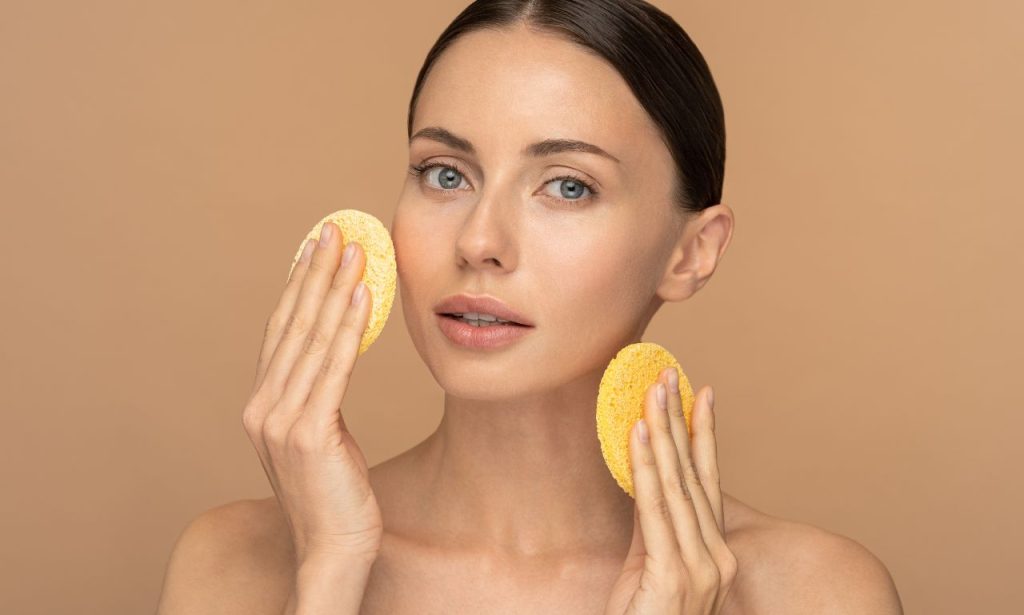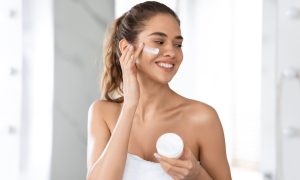Every person wants that enviable glow that makes heads turn. You’ve probably noticed how some people have naturally radiant skin while others struggle with dullness and uneven tone. I’ve spent years researching skincare techniques, and I can tell you that achieving brighter skin isn’t just about genetics—it’s about consistent care and the right approaches. Let’s dive into the most effective ways to brighten your skin and transform your complexion.
Using Face Rollers
Face rollers have become very trendy in the past few years, and understandably so. Such a basic tool, usually created with jade or rose quartz, can really enhance the blood flow to your face, leading to a naturally brighter complexion. The right technique is the way to get the most out of face rollers. Begin at the center of your face and roll out and up. Consistency is more important than pressure—slow, regular rolling for 5-10 minutes each day will be more effective than occasionally forceful treatment. Many members of a wedding party I worked with incorporated this technique before the big day, and the photographer mentioned how exceptionally radiant everyone looked in photos.
Exfoliating

Exfoliate 2-3 times per week, not daily, as over-exfoliation can damage your skin barrier. There are two main types of exfoliants: physical and chemical. Physical exfoliants include scrubs with tiny particles that mechanically remove dead skin cells. Chemical exfoliants use acids like AHAs (glycolic, lactic) or BHAs (salicylic) to dissolve the bonds between dead skin cells. Enzymatic exfoliants derived from fruits like papaya and pineapple offer a gentler alternative for sensitive skin. These natural enzymes break down dead skin cells without abrasive action. After exfoliating regularly for a month, you’ll notice your other skincare products penetrate better and work more effectively.
Laser Resurfacing
This procedure uses concentrated beams of light to remove damaged skin progressively, layer by layer. The results can last for years, making it cost-effective in the long run. A colleague of mine underwent laser resurfacing six months before her wedding day, and the improvement in her skin tone was so significant that she needed less makeup for the event. Her natural glow came through beautifully in all the photographs.
Moisturizing
Dehydrated skin is lackluster, makes fine lines stand out, and lacks that illusive glow we’re after. A healthy backdrop for skin cell repair and function is created by a good moisturizer. The key is to find the right moisturizer for your skin concerns and type. For brightening, look for niacinamide, vitamin C, and hyaluronic acid. These power players not only moisturize but treat uneven tones and boost radiance. Applying moisturizer to slightly damp skin maximizes hydration by trapping water molecules. This simple adjustment to your routine can dramatically improve brightness over time. You should apply moisturizer both morning and night, adjusting the weight of the formula according to your skin’s needs and the season.
Regular Facials
Facials at a professional level offer intense skin renewal that can be difficult to achieve on your own. Professional facials involve thorough cleansing, professional exfoliation, specific therapies, and heavy hydration—all customized to your specific skin concerns. The key to facials being so effective for brightening is the professional assessment. An experienced esthetician can assess the precise causes of dullness in your skin and customize treatments as such. They order a peel one appointment, intensive hydration another appointment, or special massage therapies to help stimulate circulation.
Stay Hydrated
Brightening your skin starts from within, and proper hydration is the foundation. When dehydrated, your skin appears duller, fine lines become more pronounced, and your complexion loses its natural radiance. Water supports every cellular function, including the skin’s ability to renew and maintain elasticity. Aim for at least eight 8-ounce glasses of water daily, more if you’re active or live in a dry climate. I’ve tracked my water intake using a marked water bottle and noticed visible improvements in my skin’s brightness within two weeks of proper hydration.
Try Micro-Needling
Micro-needling has revolutionized skin-brightening treatments by working with your body’s natural healing process. This technique uses tiny needles to create controlled micro-injuries to the skin, triggering collagen and elastin production while creating channels for products to penetrate more effectively.
Consistent micro-needling can transform skin brightness. The procedure stimulates cell turnover, reduces hyperpigmentation, and improves overall texture—all factors that contribute to a radiant complexion. Professional treatments typically use longer needles for dramatic results, while at-home devices use shorter needles for gentler stimulation.
At-home derma rollers with shorter needles (0.25-0.5mm) can be effective when used properly for maintenance. These should always be disinfected thoroughly and replaced regularly to prevent infection.
Cleanse Your Skin
Double cleansing has transformed my approach to skin brightness. This method involves using an oil-based cleanser first to dissolve makeup and sebum, followed by a water-based cleanser to remove water-soluble impurities. The comprehensive cleaning this provides creates the perfect canvas for the rest of your brightening products to work effectively.
Temperature matters significantly in the cleansing process. Too hot water can strip natural oils and irritate the skin, while cold water doesn’t effectively remove impurities. Lukewarm water provides the ideal balance for brightening purposes. After cleansing, pat—not rub—your face dry with a clean towel to avoid irritation.
Use Retinoids
Retinoids are one of dermatology’s gold standards for skin brightening and overall improvement. These vitamin A derivatives accelerate cell turnover, stimulate collagen production, and help fade hyperpigmentation, simultaneously addressing multiple causes of dull skin. Starting with retinoids requires patience and a strategic approach. Begin with the application just twice weekly, gradually increasing frequency as your skin builds tolerance. Always apply to dehydrated skin to minimize irritation, and use a nourishing moisturizer.
The “retinoid uglies”—temporary dryness, flaking, and mild irritation—often occur during the adjustment period. Don’t be discouraged; this typically subsides after 2-4 weeks as your skin adapts. The brightness and clarity that emerge afterward are worth the brief adjustment period.
Get Your Beauty Sleep

At deep sleep stages, your body increases blood circulation to the skin and accelerates cellular repair processes. Without adequate rest, these renewal mechanisms don’t work, causing dullness, uneven tone, and low radiance. Establish a consistent sleep schedule of 7-9 hours nightly. The pre-midnight period is particularly conducive to skin regeneration, so bedtimes earlier in the night tend to yield better brightening results than sleeping late. Your sleeping position has an influence on skin brightness, too. Resting on your back prevents pressure wrinkles and provides optimal circulation to the face. Silk pillowcases reduce friction and avoid moisture evaporation compared to cotton, helping keep your natural glow, even if you lie on your side.
Conclusion
Lightening your skin is a multi-aspect approach that integrates routine home treatment, professional therapies when your finances allow, and lifestyle choices that promote healthy skin from the inside out. The approaches we have outlined work synergistically—one building on the effectiveness of the others. Start with the approaches that seem easiest to you, then gradually introduce others as your regimen evolves. The journey to glowing skin is unique, yet the rules apply: cleanse away what dulls, nourish what glows, and prevent losing ground. Your most luminous skin on record is next.
ALSO READ: How to Transition to a Fall Vegan Skincare Routine
FAQs
Most people notice initial improvements within 2-4 weeks, with significant brightening after 8-12 weeks of consistent care.
Absolutely. Foods rich in antioxidants, vitamins C and E, and omega-3 fatty acids support skin brightness from within.
No. Brightening enhances your natural radiance and evening tone, while whitening aims to lighten skin beyond its natural color.
Not necessarily. Even implementing 2-3 consistent brightening techniques can produce noticeable improvements.
Start brightening routines at least 3-6 months before important events, with consistent care and avoiding new treatments in the final month.



